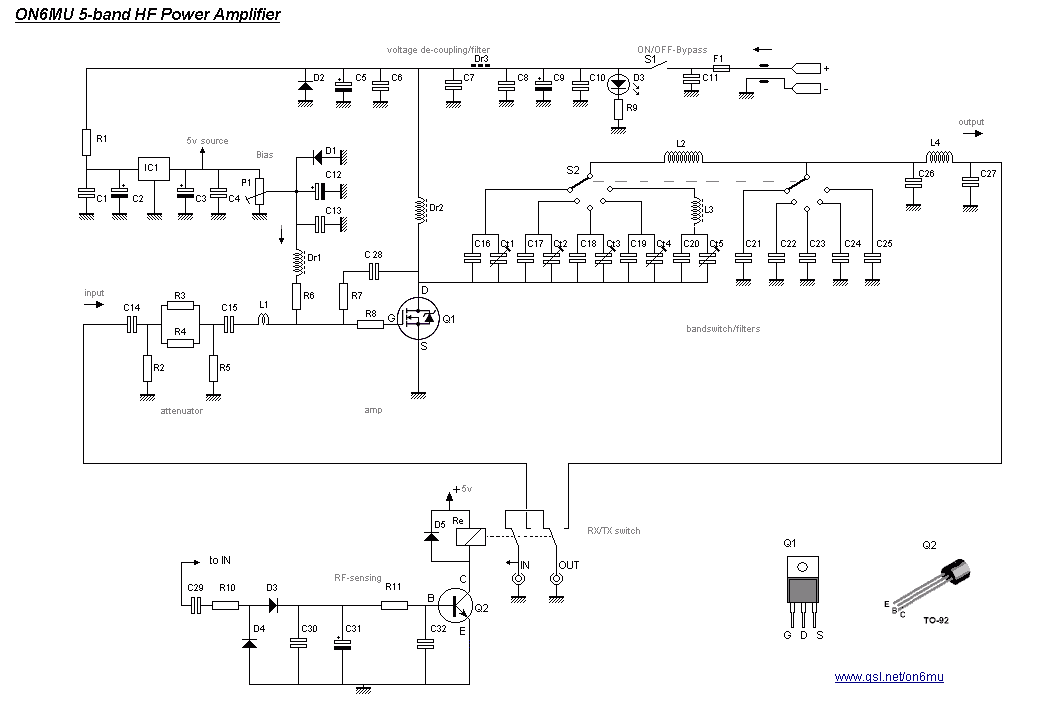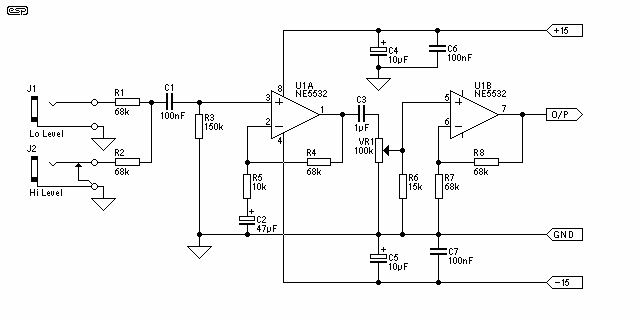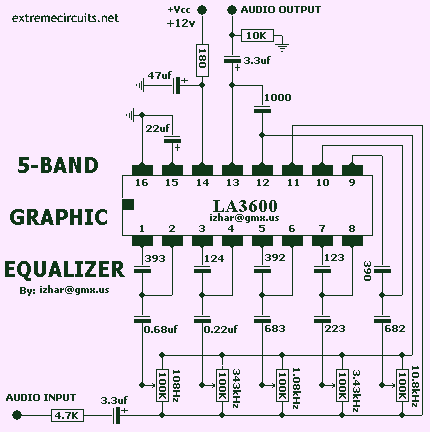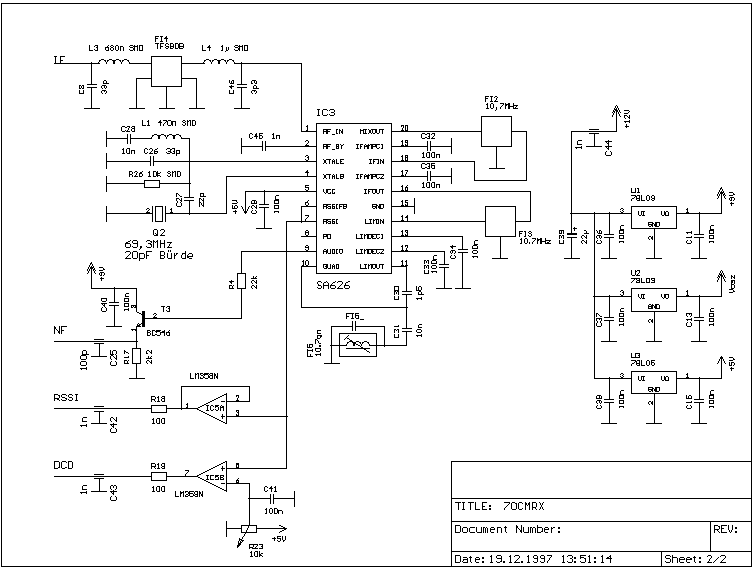
10 band graphic equalizer

The circuit of a graphic equalizer features ten adjustable potentiometers, each affecting a specific range of frequencies. The central frequency of each potentiometer is spaced one octave apart from the central frequencies of the adjacent ranges. Each unit utilizes common materials with the others, differing only in the capacitance values of the capacitors that form the filters in each unit.
The graphic equalizer circuit is designed to allow users to manipulate audio signals across a range of frequencies, enhancing the listening experience by tailoring sound characteristics to personal preferences or environmental conditions. The ten potentiometers serve as controls for distinct frequency bands, typically including sub-bass, bass, low midrange, midrange, upper midrange, and treble frequencies, among others.
Each potentiometer is connected to a bandpass filter, which is configured to allow only the desired frequency range to pass through while attenuating frequencies outside this range. The spacing of one octave between the central frequencies ensures that each band operates independently without overlapping significantly with adjacent bands, allowing for precise adjustments.
The design of the equalizer employs standard electronic components, making it relatively easy to assemble and repair. The choice of capacitors in each filter design is critical, as it determines the cutoff frequencies and the bandwidth of each band. By selecting capacitors with varying capacitance values, each filter can be tailored to achieve the desired frequency response.
In practical applications, the graphic equalizer can be implemented in various audio equipment, including home audio systems, professional sound systems, and musical instruments. The ability to modify frequency response enhances the overall sound quality, making it a valuable tool for audio engineers and enthusiasts alike. The circuit's layout should ensure minimal signal interference and maintain signal integrity, which can be achieved through careful PCB design and component placement.The circuit of graphic equalizer, allocates ten adjusting potesometer , that each one from them affects in a predetermined area of frequencies, the central frequency of which abstains a octave (double), from the central frequencies of her neighbouring regions. Each unit has common materials with remainder and it differs only in the capacity of capacitors that constitutes the filter in each unit..
🔗 External reference
The graphic equalizer circuit is designed to allow users to manipulate audio signals across a range of frequencies, enhancing the listening experience by tailoring sound characteristics to personal preferences or environmental conditions. The ten potentiometers serve as controls for distinct frequency bands, typically including sub-bass, bass, low midrange, midrange, upper midrange, and treble frequencies, among others.
Each potentiometer is connected to a bandpass filter, which is configured to allow only the desired frequency range to pass through while attenuating frequencies outside this range. The spacing of one octave between the central frequencies ensures that each band operates independently without overlapping significantly with adjacent bands, allowing for precise adjustments.
The design of the equalizer employs standard electronic components, making it relatively easy to assemble and repair. The choice of capacitors in each filter design is critical, as it determines the cutoff frequencies and the bandwidth of each band. By selecting capacitors with varying capacitance values, each filter can be tailored to achieve the desired frequency response.
In practical applications, the graphic equalizer can be implemented in various audio equipment, including home audio systems, professional sound systems, and musical instruments. The ability to modify frequency response enhances the overall sound quality, making it a valuable tool for audio engineers and enthusiasts alike. The circuit's layout should ensure minimal signal interference and maintain signal integrity, which can be achieved through careful PCB design and component placement.The circuit of graphic equalizer, allocates ten adjusting potesometer , that each one from them affects in a predetermined area of frequencies, the central frequency of which abstains a octave (double), from the central frequencies of her neighbouring regions. Each unit has common materials with remainder and it differs only in the capacity of capacitors that constitutes the filter in each unit..
🔗 External reference





